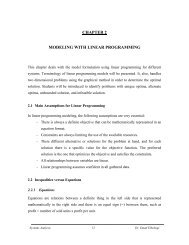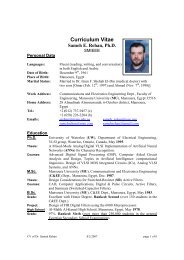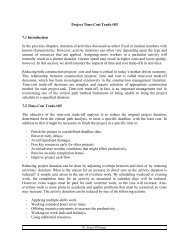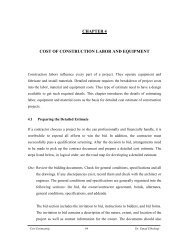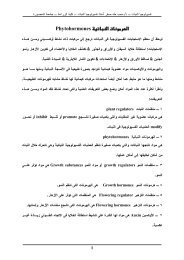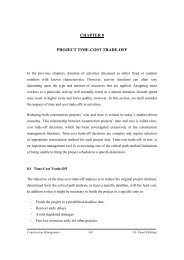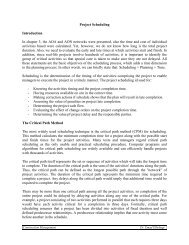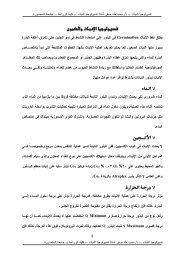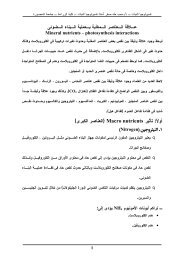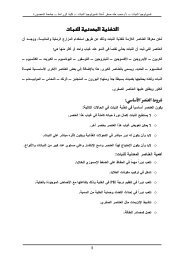Thyroid and Parathyroid
Thyroid and Parathyroid
Thyroid and Parathyroid
You also want an ePaper? Increase the reach of your titles
YUMPU automatically turns print PDFs into web optimized ePapers that Google loves.
the vagus to run directly to the larynx, often in close proximity to the superior thyroid<br />
.( vessels, <strong>and</strong> may be at risk when these vessels are transected (Fig. 36-8<br />
The superior laryngeal nerve arises from the vagus near the base of the skull <strong>and</strong><br />
descends medial to the carotid vessels. At the level of the hyoid bone it divides into<br />
two branches, one sensory (internal branch), <strong>and</strong> the other motor (external branch).<br />
The external branch runs on the lateral surface of the inferior constrictor muscle <strong>and</strong><br />
descends to innervate the cricothyroid muscle (Fig. 36-9). This muscle alters vocal<br />
cord tension <strong>and</strong> affects the pitch of the voice. In most instances the nerve runs in<br />
close proximity to the superior pole vessels, <strong>and</strong> in 21 percent of people it is closely<br />
related to the vessels <strong>and</strong> is at significant risk if it is not identified at operation. To<br />
avoid injury, the superior pole vessels should be individually ligated <strong>and</strong> divided low<br />
. on the thyroid gl<strong>and</strong> <strong>and</strong> dissected laterally to the cricothyroid muscle<br />
PHYSIOLOGY<br />
Through release of its principal hormones, thyroxine (T4) <strong>and</strong> triiodothyronine (T3),<br />
the thyroid gl<strong>and</strong> influences the metabolic rate of all tissues. Increased secretion<br />
increases the metabolic rate; conversely, the rate decreases when secretion is<br />
decreased. Release of T4 <strong>and</strong> T3 is stimulated by the anterior pituitary hormone<br />
thyrotropin or thyroid- stimulating hormone (TSH). Secretion of TSH is directly<br />
suppressed by T4 <strong>and</strong> T3 (a negative feedback loop). TSH release also is stimulated<br />
by the hypothalamic hormone thyrotropin-releasing hormone (TRH). <strong>Thyroid</strong><br />
hormone production is influenced by numerous physiologic, pathologic, <strong>and</strong><br />
. pharmacologic factors<br />
Iodine Metabolism<br />
The formation of thyroid hormones is dependent on the availability of exogenous<br />
iodine. The average daily iodine requirement is 0.1 mg. Iodine is found principally in<br />
fish, milk, <strong>and</strong> eggs. In the United States, iodine is routinely added to bread <strong>and</strong> salt in<br />
order to reduce the frequency of iodine deficiency. Iodine is rapidly converted to<br />
iodide in the stomach <strong>and</strong> jejunum <strong>and</strong> is absorbed into the bloodstream within 1 h;<br />
<strong>and</strong> from there it is distributed uniformly throughout the extracellular space (Fig. 36-<br />
10). Iodide is actively transported into the thyroid follicular cells by an ATPdependent<br />
process. The thyroid-serum iodine ratio under normal conditions is about<br />
50:1, <strong>and</strong> most of the body's store of iodine is found in the thyroid gl<strong>and</strong> (90 percent).<br />
<strong>Thyroid</strong>-serum ratios can be as high as 500:1 in certain instances, such as iodine<br />
. deficiency or Graves' disease<br />
One-third of the loss of iodine from the plasma is accounted for by thyroid<br />
concentration, <strong>and</strong> the other two-thirds through renal excretion. In studies involving<br />
radiolabeled iodine, all the iodine is concentrated within the thyroid or excreted in the<br />
urine within 48 h, <strong>and</strong> the plasma <strong>and</strong> tissues are mostly cleared of iodide. Evidence<br />
of labeled iodine in serum is accounted for by secretion from the thyroid gl<strong>and</strong> in the<br />
. form of thyroid hormone<br />
Synthesis of <strong>Thyroid</strong> Hormone<br />
Steps in the synthesis of thyroid hormone are: (1) active trapping <strong>and</strong> concentration of<br />
iodide in the follicular cell; (2) rapid oxidation of iodide to iodine; (3) linkage of<br />
iodine with tyrosine residues in thyroglobulin; (4) coupling of these iodotyrosines<br />
(monoiodo- <strong>and</strong> diiodotyrosine) to form the active thyroid hormones T4 <strong>and</strong> T3.



